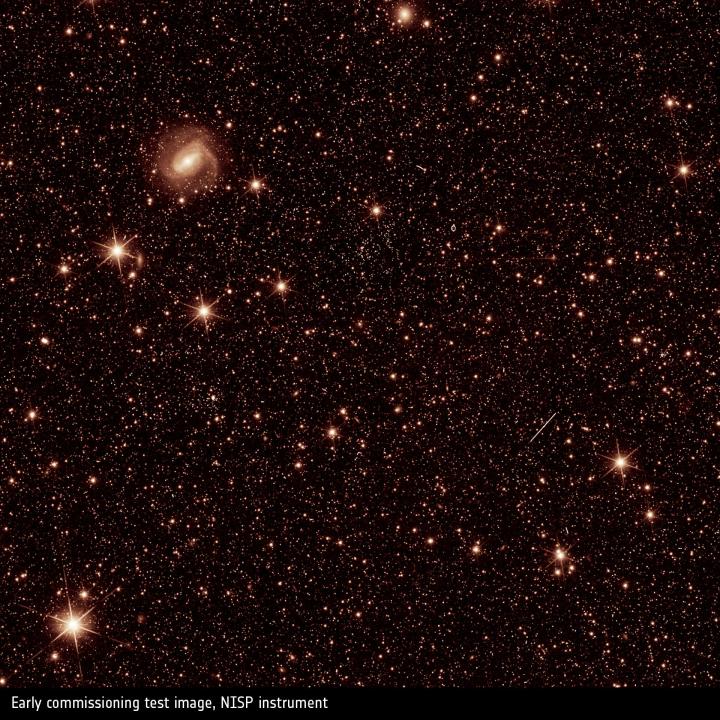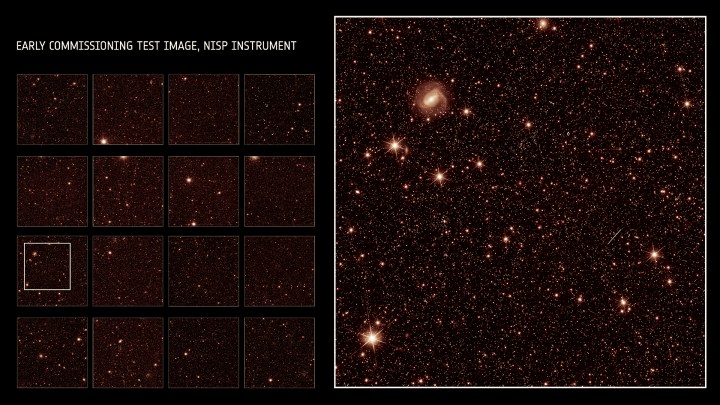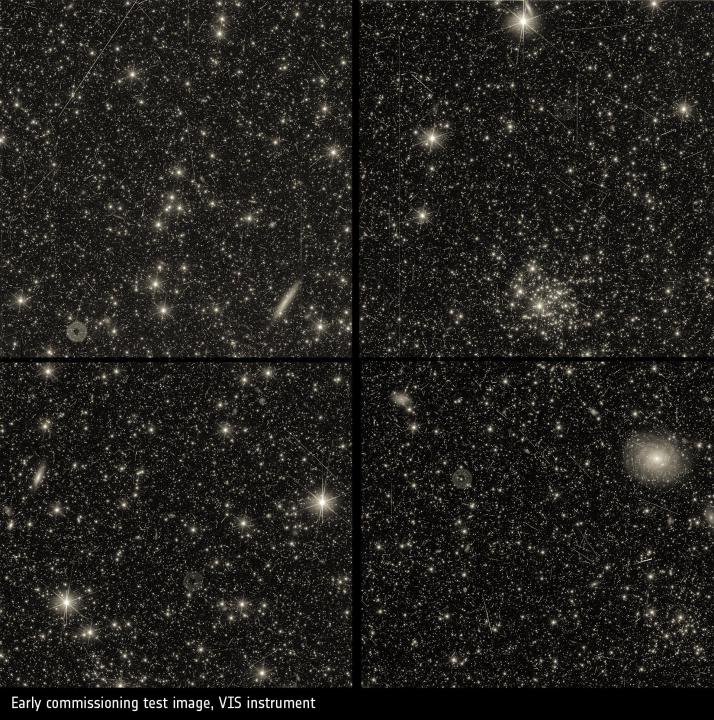The recently-launched Euclid space telescope just took some of its first images, and the European Space Agency (ESA) has shared them to give a taste of what is to come from this dark matter investigation tool.
Even though they are only preliminary test images, they still give a stunning view of distant galaxies and show what Euclid will be able to produce once it begins its science operations in a few months’ time. The aim of the mission is to learn about dark matter and dark energy by creating a 3D map of the dark matter in the universe.

The first image was taken using Euclid’s Near-Infrared Spectrometer and Photometer (NISP) instrument as part of the commissioning process. It shows some tweaks that still need to be made to the final processed images, such as removing artifacts caused by cosmic rays (the straight lines which look like scratches on the image). This was also taken with a short exposure of just 100 seconds, compared to the 500+ seconds that will be used for science images, making them sharper and more detailed. But this was already enough to show features like spiral galaxies, nearby stars, and star clusters.

To give you an idea of how detailed these images are, the image at the top is just one small part of the huge field of view of the NISP instrument. Above you can see how this image was cropped from the total NISP test image, showing just 4% of its total field of view.
“After more than 11 years of designing and developing Euclid, it’s exhilarating and enormously emotional to see these first images,” says Euclid project manager Giuseppe Racca in a statement. “It’s even more incredible when we think that we see just a few galaxies here, produced with minimum system tuning. The fully calibrated Euclid will ultimately observe billions of galaxies to create the biggest ever 3D map of the sky.”
As well as NISP, Euclid has another instrument called the VISible instrument (VIS) which will look in the visible light range, unlike NISP which takes images in the infrared. Once again, this image is just a small crop of the total field of view.

“I’m thrilled by the beauty of these images and the abundance of information contained within them,” said Mark Cropper from University College London, leader of the development of VIS. “I’m so proud of what the VIS team has achieved and grateful to all of those who have enabled this capability. VIS images will be available for all to use, whether for scientific or other purposes. They will belong to everybody.”



